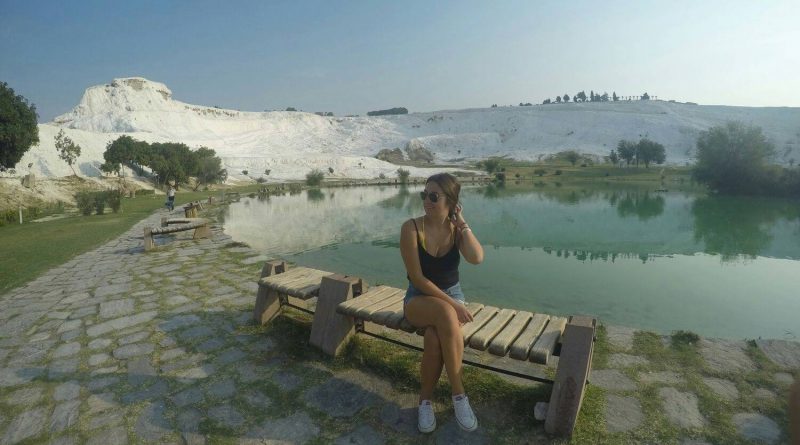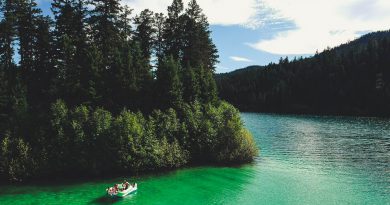Pamukkale
Pamukkale (which means Cotton Castle in Turkish) and the neighbouring ancient city of Hierapolis are World Heritage sites located in the South West and Turkey approximately 250km (4 hours) from Bodrum. With over 2 million visitors each year, it is the most popular tourist attraction in Turkey.
Getting to Pamukkale
Like most of the natural and historical sites in Turkey, Pamukkale and Hierapolis are relatively isolated. The nearest airport is Denizli which is 1hour away (65km). There are 3 Turkish Airline flights from Istanbul each day. For tourists, many may choose to conduct a day trip from either Bodrum (4 hours) or Antalya (3 hours) and this is something we did.
Tip: Shop around for the best deal / itinerary that is suited to you. It may be worth paying extra for smaller groups, a knowledgeable guide or drop off direct at your hotel.
Exploring the Site
The site has been made famous for its mineral-rich thermal waters which have left spectacular white travertine (a form of limestone) terraces on the nearby hillside. These hot springs have been used as a spa for the ancients world rich and famous since the 2nd Century B.C and this has caused a large ancient town to be developed around the site.
Sam and I loved Pamukkale, the waters were warm, the sun was shining and the views (both looking into the mountain and out accross the plain) were fantastic. The site can get busy so I would recommend trekking down the terraces to the bottom to cut out the majority of the crowds.
Tip: The terraces themselves are VERY SLIPPY, so be careful, especially when walking from terrace to terrace. Shoes are not permitted to prevent erosion of the site. This also means that alot of tourists do not venture past the first few terraces which help keep the crowds at bay further down the cliffs.
Hierapolis – Cleopatra Pool
Whilst the terraces were the reason for the visit, It would have been rude not to explore the rest of site. The ruins are in excellent condition but if this is your thing I would recommend visiting Ephesus for sheer grandeur and scale. The site has been visited by a number of famous names, none more so than Cleopatra whom a natural pool has been named after. According to legend, the pool was a gift to Cleopatra from Mark Anthony.
The pool, formed following an earthquake in the 7th Century is naturally heated to 36-37 °C. The water is described as ‘champagne water’ and this is caused by releases of gases by the abundance minerals within the water. The earthquake also topped a number of marble buildings and parts of these marble pieces can still be seen today.
The pool costs 30TL (£8) to enter which which can seem excessive but I am a big fan of the ‘When in Rome’ Motto. I have been to the Blue Lagoon in Iceland and this experience is completely different and cannot truly be replicated.
Note; Whilst many tours will advertise as visiting Pamukkale and Cleopatra Pool, very few will actually include entrance to the pool. There are no ATM’s nearby so make sure you have cash available. This is something Sam and I feel foul of. I would like to Thank the American gentleman who came to our rescue and lent us the money.
The Useful Bits
- Pamukkale / Hierapolis are open from 8.30 – 19.30 each day and entrance to the site is 20 Turkish Lira (about £5).
- This doesn’t include all the attractions which are available at an additional cost such as Cleopatra’s pool which is 30TL to enter (about £8). Lockers are available in this complex for your valuables as you enjoy the pool.
- Sam and I did the 2 day tour from Bodrum Excursions which included both Pamukkale and Ephesus. The total of the tour was £60 which included accommodation, some meals and entrance for the attractions (not Cleopatra pool).




